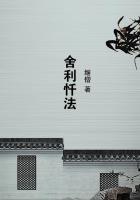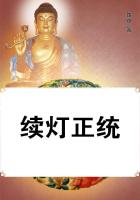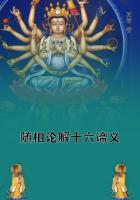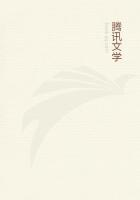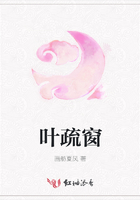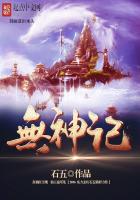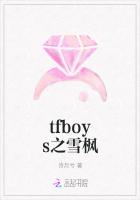Man also has upper and lower eyelashes, and hair under the armpits and on the pubes. No other animal has hair in either of these localities, or has an under eyelash; though in the case of some animals a few straggling hairs grow under the eyelid.
Of hair-coated quadrupeds some are hairy all over the body, as the pig, the bear, and the dog; others are especially hairy on the neck and all round about it, as is the case with animals that have a shaggy mane, such as the lion; others again are especially hairy on the upper surface of the neck from the head as far as the withers, namely, such as have a crested mane, as in the case with the horse, the mule, and, among the undomesticated horned animals, the bison.
The so-called hippelaphus also has a mane on its withers, and the animal called pardion, in either case a thin mane extending from the head to the withers; the hippelaphus has, exceptionally, a beard by the larynx. Both these animals have horns and are cloven-footed; the female, however, of the hippelaphus has no horns. This latter animal resembles the stag in size; it is found in the territory of the Arachotae, where the wild cattle also are found. Wild cattle differ from their domesticated congeners just as the wild boar differs from the domesticated one. That is to say they are black, strong looking, with a hook-nosed muzzle, and with horns lying more over the back. The horns of the hippelaphus resemble those of the gazelle.
The elephant, by the way, is the least hairy of all quadrupeds.
With animals, as a general rule, the tail corresponds with the body as regards thickness or thinness of hair-coating; that is, with animals that have long tails, for some creatures have tails of altogether insignificant size.
Camels have an exceptional organ wherein they differ from all other animals, and that is the so-called 'hump' on their back. The Bactrian camel differs from the Arabian; for the former has two humps and the latter only one, though it has, by the way, a kind of a hump below like the one above, on which, when it kneels, the weight of the whole body rests. The camel has four teats like the cow, a tail like that of an ass, and the privy parts of the male are directed backwards. It has one knee in each leg, and the flexures of the limb are not manifold, as some say, although they appear to be so from the constricted shape of the region of the belly. It has a huckle-bone like that of kine, but meagre and small in proportion to its bulk. It is cloven-footed, and has not got teeth in both jaws; and it is cloven footed in the following way: at the back there is a slight cleft extending as far up as the second joint of the toes;and in front there are small hooves on the tip of the first joint of the toes; and a sort of web passes across the cleft, as in geese.
The foot is fleshy underneath, like that of the bear; so that, when the animal goes to war, they protect its feet, when they get sore, with sandals.
The legs of all quadrupeds are bony, sinewy, and fleshless; and in point of fact such is the case with all animals that are furnished with feet, with the exception of man. They are also unfurnished with buttocks; and this last point is plain in an especial degree in birds. It is the reverse with man; for there is scarcely any part of the body in which man is so fleshy as in the buttock, the thigh, and the calf; for the part of the leg called gastroenemia or is fleshy.
Of blooded and viviparous quadrupeds some have the foot cloven into many parts, as is the case with the hands and feet of man (for some animals, by the way, are many-toed, as the lion, the dog, and the pard); others have feet cloven in twain, and instead of nails have hooves, as the sheep, the goat, the deer, and the hippopotamus; others are uncloven of foot, such for instance as the solid-hooved animals, the horse and the mule. Swine are either cloven-footed or uncloven-footed; for there are in Illyria and in Paeonia and elsewhere solid-hooved swine. The cloven-footed animals have two clefts behind; in the solid-hooved this part is continuous and undivided.
Furthermore, of animals some are horned, and some are not so.
The great majority of the horned animals are cloven-footed, as the ox, the stag, the goat; and a solid-hooved animal with a pair of horns has never yet been met with. But a few animals are known to be singled-horned and single-hooved, as the Indian ass; and one, to wit the oryx, is single horned and cloven-hooved.
Of all solid-hooved animals the Indian ass alone has an astragalus or huckle-bone; for the pig, as was said above, is either solid-hooved or cloven-footed, and consequently has no well-formed huckle-bone.
Of the cloven footed many are provided with a huckle-bone. Of the many-fingered or many-toed, no single one has been observed to have a huckle-bone, none of the others any more than man. The lynx, however, has something like a hemiastragal, and the lion something resembling the sculptor's 'labyrinth'. All the animals that have a huckle-bone have it in the hinder legs. They have also the bone placed straight up in the joint; the upper part, outside; the lower part, inside; the sides called Coa turned towards one another, the sides called Chia outside, and the keraiae or 'horns' on the top. This, then, is the position of the hucklebone in the case of all animals provided with the part.
Some animals are, at one and the same time, furnished with a mane and furnished also with a pair of horns bent in towards one another, as is the bison (or aurochs), which is found in Paeonia and Maedica.
But all animals that are horned are quadrupedal, except in cases where a creature is said metaphorically, or by a figure of speech, to have horns; just as the Egyptians describe the serpents found in the neighbourhood of Thebes, while in point of fact the creatures have merely protuberances on the head sufficiently large to suggest such an epithet.

